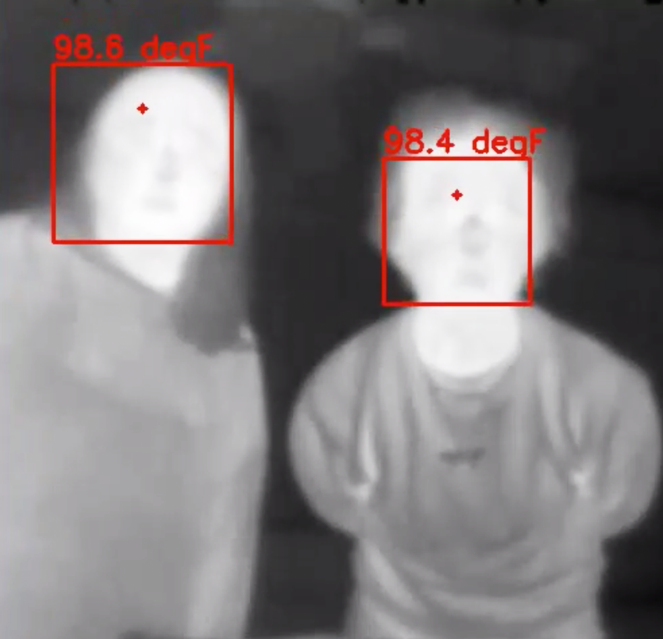Remote fever-scanning technologies
Researchers are developing affordable fever-screening technologies for buildings and first responders to detect fevers, using an algorithm to detect faces and measure temperature on the forehead.
As COVID-19 engulfs the world, businesses are looking ahead and preparing for their reopening. Responding to industry inquiries, Yang Cai is leading a team that’s developing automatic remote fever-screening technologies that can make it possible for buildings and first responders to detect fevers from a distance.
Cai, a senior systems scientist in Carnegie Mellon University’s CyLab and the director of the Visual Intelligence Studio, is working with research engineers Sean Hackett and Florian Alber to scan people’s foreheads to detect fevers. The goal is to provide reopening businesses an affordable tool for screening people who enter their premises.
The challenge with the project lies in the complexity of human behaviors. People wear masks, bandanas, and hats, carry coffee mugs, walk in different directions, assume various poses, and these things make it difficult to detect someone’s forehead.
Working in their home labs, the researchers developed an algorithm that can detect multiple faces and measure temperature on the forehead. They applied sensor fusion of multiple data sources to achieve the desirable accuracy for temperature screening. With their innovative fusion algorithm, the team was able to significantly reduce the false negative and false positive detection results. The system can perform self-calibration on the measurements with the factors of distance and ambient temperature. Compared to today’s commercial thermal scanners, the researchers are building a system that delivers accuracy at lower costs.
Prior to this project, the team designed an award-winning smart helmet for firefighters, and they are drawing from this experience to transfer their work from the standalone fever-scanning system to one that is mounted on a helmet for mobile use. The technology is lightweight by design, and they built a prototype that features a battery-powered single board computer and a thermal imaging chip. The system’s accuracy is dependent on the thermal chip, and the researchers are addressing inherent challenges with these kinds of chips.
Despite the lockdown situation, the researchers were able to build the first prototype in merely nine days with available parts they had in their homes. They also performed preliminary testing and made improvements in the following weeks. The team intends to conduct further testing in buildings once the shutdown situation changes.
This work demonstrates how resilient a research group can be.
Yang Cai, Senior Systems Scientist, CyLab
“This work demonstrates how resilient a research group can be with professional skills, cyber-collaboration tools like Zoom, Amazon deliveries, and commonly available parts. The lab has in fact operated more productively than before, without physical distractions and daily commuting,” said Cai.
Although this is early-stage research, the team says the technology could be mounted above doorways to screen workers entering offices. The tool could add additional layers of security for a reasonable cost. The heads-up display on the helmet could be used by first responders to assess the situation of patients on the field.
The team has reached out to local museums and EMS teams about the technology and have launched the “Engineers Respond to COVID-19” Technical Lecture Series with IEEE Pittsburgh Section. Recently they have given talks on remote fever screening, haptic interfaces, and local data tracking and modeling.


